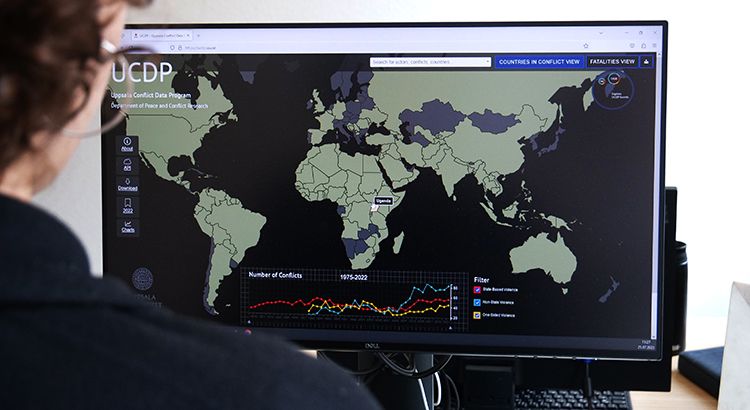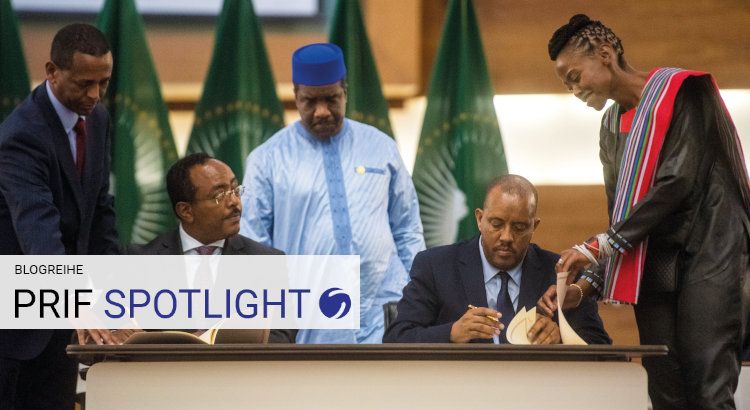Schlagwort: innerstaatlicher Konflikt
Civil wars may not respect national boundaries. As civil war escalates in Myanmar, its consequences are being felt across the border in unexpected ways. In China’s Yunnan province, the city of Ruili has faced significant economic challenges. Once a thriving hub for trade and industry, the closure of border crossings, the collapse of trade routes, factory shutdowns, and the decline of the jade market have all weakened Ruili’s economic foundation. This article examines how a civil war within one state has profoundly disrupted the economy and social fabric of a neighboring country.
Aussichten für Syrien nach dem Sieg der Rebellen
Mehr als dreizehn Jahre litten die Menschen in Syrien unter den Folgen des Bürgerkrieges. In den letzten Wochen ging es dann schnell. Rebellen rückten weiträumig vor und veranlassten Assad zur Flucht nach Moskau. Die Aufständischen haben das langjährige Regime militärisch besiegt. Auf den Sturz von Assad folgten teils euphorische Reaktionen. Doch vor welcher Zukunft steht Syrien nach dem Triumph der Rebellen?
Syrien: Blitzoffensive der islamistischen Rebellenallianz stürzt Assad
Eine Blitzoffensive der islamistischen Rebellenallianz markiert das Ende des Assad-Regimes. Ende November 2024 erobern die Rebellen mit rasantem Tempo große Städte, und Anfang Dezember fällt auch Damaskus. Der Zusammenbruch der Ba’ath-Regime-Truppen erfolgt wie ein Dominoeffekt, und Baschar Al-Assad ist im russischen Exil – ein Wendepunkt im syrischen Bürgerkrieg. Der Beitrag beleuchtet die Hintergründe der dramatischen Ereignisse in Syrien und wirft einen Blick auf die Zukunft des Landes.
Breaking the Cycle or Maintaining Police Lethality: The Challenge for Brazil under Lula’s Government
Elected on a progressive platform promising respect for human rights, Brazilian President Luiz Inácio Lula da Silva faces the critical challenge of breaking the cycle of state violence and the use of excessive lethal force by public agents. Yet despite the administration being a third of the way through its term, government efforts to curb appear to be stuck in a state of inertia. This blog post examines the problems and opportunities facing Lula's administration today.
Sudans humanitäre Katastrophe: die Rolle von Zivilgesellschaft und Kunst als Zeugen
Im April 2023 begann im Sudan ein Krieg neuen Ausmaßes. Seither wurde die Hauptstadt Khartum verwüstet, lebenswichtige Infrastruktur im ganzen Land zerstört, und etwa zehn Millionen Menschen sind geflohen. Der Gewaltkonflikt wird von den Sudanesischen Streitkräften (SAF) und den paramilitärischen Rapid Support Forces (RSF) ausgetragen. Beide Fraktionen kämpfen um Kontrolle über das ressourcenreiche Land. Der anhaltende bewaffnete Konflikt hat dramatische humanitäre Folgen und birgt das Risiko der Ausbreitung auf die gesamte Region. Angesichts der Dimension der humanitären Katastrophe ist das Fehlen internationaler Aufmerksamkeit und Hilfe eklatant. In diesem Blogbeitrag zeige ich, wie sich die sudanesische Zivilbevölkerung und Diaspora-Netzwerke angesichts des Fehlens internationaler Aufmerksamkeit und Unterstützung engagieren, Hilfe leisten und den Krieg dokumentieren.
Small Sparks, Big Flames: Why Resolving Local Conflicts Matters for Wider Security – The Case of Bawku Conflict in Ghana.
In the Sahel region, terrorist groups have exploited existing local conflicts to expand their activities and reach. In recent years, countries especially in coastal West Africa, have experienced terrorist activities in their territories. While Ghana has been resilient against terrorist attacks on its soil, the country continues to grapple with enduring ethnic conflicts, among them the Mamprusi and Kusai conflict in Bawku. In this blog post I argue that the Bawku conflict has persisted over an extensive period, and if left unresolved, could potentially open the door for extremist exploitation and infiltration, signaling a troubling extension of Sahel terrorist activities.
Reintegration durch lokale Interaktion: Der kolumbianische Friedensprozess aus Sicht ländlicher Gemeinschaften
Ein zentrales Element des kolumbianischen Friedensprozesses mit der FARC-Guerilla bildet die kollektive Wiedereingliederung der ehemaligen Kombattant:innen in eigens dafür eingerichteten „territorialen Reinkorporationsräumen“. Eine Umfrage in sieben ländlichen Gemeinden deutet darauf hin, dass dieser Reinkorporationsprozess zu einem erkennbaren Abbau von sozialer Distanz und Misstrauen in der lokalen Bevölkerung geführt hat und so zur Wiederherstellung des sozialen Zusammenhalts beiträgt. Diese Erfolge sind allerdings begrenzt und – angesichts der andauernden Gewalt in den marginalisierten Regionen Kolumbiens – teils akut gefährdet.
Wie verlässlich sind Daten zu Todesopfern in bewaffneten Konflikten?
Viele vergleichende Studien untersuchen die Effekte von Vermittlung, Sanktionen oder militärischen Interventionen auf Dauer und Verlauf bewaffneter Konflikte. Sie nehmen dabei an, dass die verfügbaren Daten das Auf und Ab der tödlichen Gewalt über Zeit sowie Unterschiede je nach Ort hinreichend gut abbilden. Einige Arbeiten leiten aus ihren Befunden Empfehlungen für die Politik ab. Auch das jährliche Friedensgutachten nutzt die Daten eines führenden Anbieters. Dessen Angaben dienen des Weiteren dazu, die Eskalation von Auseinandersetzungen zu prognostizieren. Ihre breite Verwendung wirft die Frage auf, wie sehr man sich auf diese Konfliktdaten verlassen kann.
Prospects for Peace in Tigray. An assessment of the peace agreement between the Ethiopian government and the TPLF
On November 2, 2022, the Ethiopian federal government and representatives of the Tigrayan rebels concluded an agreement intended to end the devastating civil war in the region. What some consider to be the world’s deadliest active conflict has caused tens of thousands battle-related fatalities and even more civilian victims due to famine and lack of medical service during the last two years. This Spotlight discusses the prospects of the current peace agreement and potential pitfalls that may undermine its stability.
Bolivia: A New Battle over the Census. The 36-day Strike of the Santa Cruz Civic Movement against the Arce Government
In November, President Luis Arce in Bolivia faced one of the most turbulent moments of his government. In response to the postponement of the Population and Housing Census (initially scheduled for 2022) to 2024, mass protests in the country’s lowland region and the economic powerhouse of Santa Cruz effectively shut down Bolivia’s largest city. The strike was promoted by Governor Luis Fernando Camacho, who in 2019 led the movement that overthrew Evo Morales. The demand was to carry out the census in 2023 and request the redistribution of economic resources and parliamentary seats before the 2025 elections.









